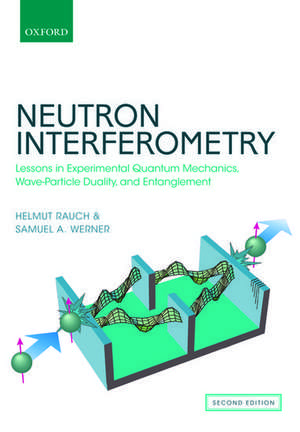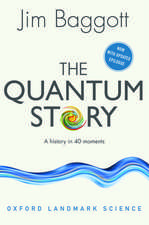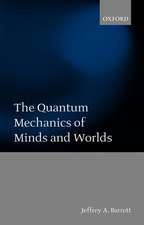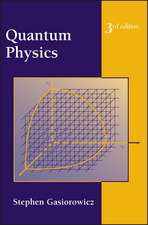Neutron Interferometry: Lessons in Experimental Quantum Mechanics, Wave-Particle Duality, and Entanglement
Autor Helmut Rauch, Samuel A. Werneren Limba Engleză Paperback – 16 noi 2017
| Toate formatele și edițiile | Preț | Express |
|---|---|---|
| Paperback (1) | 329.53 lei 31-37 zile | |
| OUP OXFORD – 16 noi 2017 | 329.53 lei 31-37 zile | |
| Hardback (1) | 753.18 lei 31-37 zile | |
| OUP OXFORD – 15 ian 2015 | 753.18 lei 31-37 zile |
Preț: 329.53 lei
Preț vechi: 446.91 lei
-26% Nou
Puncte Express: 494
Preț estimativ în valută:
63.06€ • 68.48$ • 52.97£
63.06€ • 68.48$ • 52.97£
Carte tipărită la comandă
Livrare economică 11-17 aprilie
Preluare comenzi: 021 569.72.76
Specificații
ISBN-13: 9780198809814
ISBN-10: 0198809816
Pagini: 464
Ilustrații: 215 b/w illustrations
Dimensiuni: 172 x 248 x 22 mm
Greutate: 0.88 kg
Ediția:2
Editura: OUP OXFORD
Colecția OUP Oxford
Locul publicării:Oxford, United Kingdom
ISBN-10: 0198809816
Pagini: 464
Ilustrații: 215 b/w illustrations
Dimensiuni: 172 x 248 x 22 mm
Greutate: 0.88 kg
Ediția:2
Editura: OUP OXFORD
Colecția OUP Oxford
Locul publicării:Oxford, United Kingdom
Notă biografică
Helmut Rauch completed his PhD in 1965 and become a full Professor in 1972. He spent one sabbatical year at KFA Juelich/Germany and worked regularly at the Institute Laue-Langevin in Grenoble/France. He invented the perfect crystal neutron interferometer (together with U. Bonse and W. Treimer), and has published more than 350 papers in refereed journals. He was Director of the Atomic Institute in Vienna, President of the Austrian Science Foundation and twice President of the Austrian Physical Society.Samuel Werner received his AB degree at Dartmouth College in 1959 and his PhD degree at the University of Michigan in 1965. He was a staff scientist in the Physics Department of the Scientific Laboratory of the Ford Motor Company for 10 years. He became Professor of Physics at the University of Missouri in 1975. Upon his retirement from Missouri in 2000 he moved to Gaithersburg, MD to become a guest researcher at NIST.













